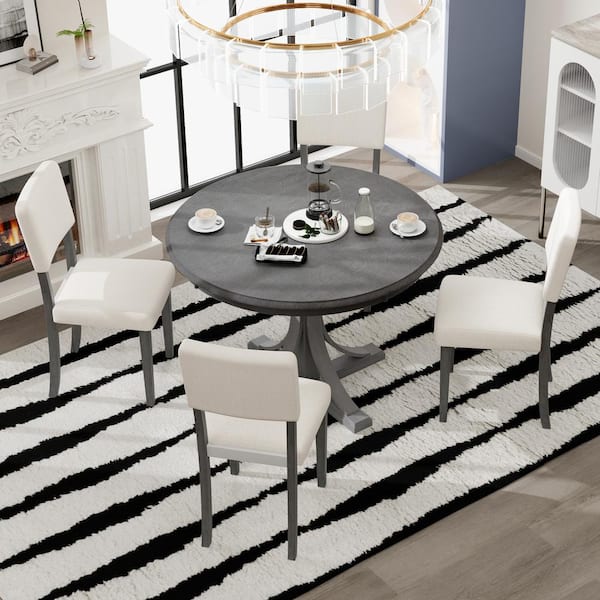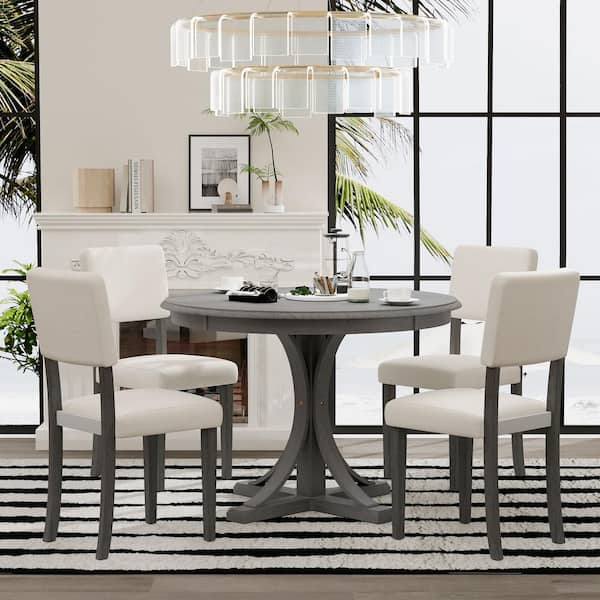From Traditional to Modern: Locate the Perfect Dining-room Table Legs for Your Style
While timeless layouts such as cabriole and turned legs evoke a feeling of classic elegance, modern styles like barrette and geometric choices offer an opportunity for striking aesthetic interest. As you think about these components, the inquiry remains: exactly how can you effortlessly incorporate these varied leg styles to create a harmonious dining experience?
Comprehending Table Leg Styles
The selection of eating area table leg designs can dramatically affect both the appearances and capability of the room. Each leg design adds special useful features and visual components, accommodating varied style preferences and use needs. Recognizing these designs is important for choosing the right eating table that straightens with your general interior layout vision.
For circumstances, tapered legs provide a tidy, timeless look that can enhance an area's sophistication, while pedestal bases provide security and make best use of legroom, making them excellent for smaller sized spaces. Barrette legs, a trademark of mid-century modern layout, introduce an industrial style, enabling a ventilated, open feel. Similarly, trestle legs stimulate rustic charm, providing durable support and a feeling of timelessness.
In addition, the option of materials plays a substantial role. Wood legs can bring warmth and appearance, whereas metal alternatives typically convey a smooth, modern vibe. Inevitably, comprehending table leg designs is vital for developing a cohesive eating location that shows individual style while making sure practicality and comfort. By attentively considering these aspects, you can boost both the visual and functional charm of your eating space.
Standard Table Leg Options
When picking dining room table legs, standard choices usually embody timeless sophistication and workmanship. These layouts reflect a rich heritage and a commitment to high quality, making them suitable for those that value timeless aesthetics.
One of the most iconic standard leg styles is the cabriole leg, identified by its graceful bent shape. This design usually includes attractive carvings and is most frequently found in Queen Anne and Chippendale furnishings. One more preferred choice is the turned leg, which boasts a series of smooth, rounded forms that provide a classic look while keeping stability.
Moreover, the straight leg, while straightforward, supplies a unadorned and sturdy framework that can mix effortlessly with a range of tabletop styles. For those drawn to ornate describing, claw-and-ball feet legs stimulate a sense of splendour and can act as a stunning focal point in any kind of dining space.
Last but not least, stand bases, although not strictly legs, provide a different standard choice that enables enough legroom and can be perfectly carved. Each of these traditional leg designs adds to the total atmosphere of a dining area, marrying feature with aesthetic charm.

Modern Table Leg Designs
Modern table leg layouts provide a varied variety of designs that emphasize ingenious materials and clean lines. These layouts frequently focus on performance while offering as striking centerpieces within an eating space. Minimalist aesthetic appeals prevail, with legs crafted from materials such as metal, glass, and engineered wood, which add to a modern and ventilated feeling.
One popular style is the barrette leg, characterized by its slender, conical structure that offers security without overwhelming the tabletop (dining room table legs). This design is often discovered in mid-century modern-day furniture and can effortlessly match numerous dining table shapes. An additional fad is the use of geometric shapes, where legs might tackle angular or asymmetrical types, including aesthetic interest and a touch of creativity

Mixing Designs for Unique Rooms
Commonly, homeowners seek to create one-of-a-kind eating areas that mirror their individual style by blending numerous layout aspects. This method enables the unification of varied appearances, leading to a harmonious yet distinctive setting. Coupling a rustic wooden table with sleek, modern-day metal legs can create an appealing comparison that boosts the area's total appeal.
Additionally, integrating vintage table legs with contemporary tabletops can evoke a straight from the source feeling of background while keeping a contemporary sensibility. Such mixes not only display private preference however additionally motivate creative thinking, enabling homeowners to curate an area that really feels both personal and welcoming.
Color plays a crucial function in this mixing process; picking table legs that complement or comparison with the existing color pattern can boost visual rate of interest. Whitewashed legs can soften the daring of a dark table surface, producing a well balanced visual.
Tips for Choosing the Right Legs
Choosing the right table legs is essential for accomplishing both capability and aesthetic appeal in your eating area. Begin by thinking about the total design of your room. Traditional settings gain from legs that feature intricate carvings or turned layouts, while modern spaces may call for smooth, minimal designs.
Following, assess the height and stability of the legs. dining room table legs. Conventional table vary in between 28 to 30 inches in elevation, so ensure the legs match this measurement for comfort. Furthermore, robust materials, such as hardwood or metal, can improve security and durability
Examine the leg form too-- alternatives consist of right, tapered, or stand layouts. Straight legs supply a timeless appearance, while conical legs can include a touch of sophistication. Pedestal bases give enough legroom and are ideal for look at here now smaller rooms.
Verdict
In recap, top article choosing the optimal dining area table legs calls for careful factor to consider of both contemporary and conventional styles. By integrating leg design, height, and material with the total design, a cohesive and welcoming atmosphere can be achieved.
The selection of eating area table leg designs can considerably influence both the looks and performance of the space. Inevitably, recognizing table leg designs is important for developing a cohesive eating area that shows individual style while making certain functionality and convenience.One of the most iconic typical leg styles is the cabriole leg, defined by its elegant curved form. Straight legs supply a traditional appearance, while conical legs can add a touch of sophistication.In recap, selecting the excellent dining space table legs needs mindful consideration of both modern and standard designs.
Comments on “How Dining Room Table Legs Can Change the Entire Aesthetic of Your Room”